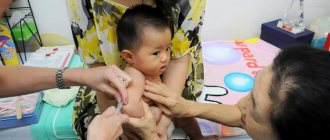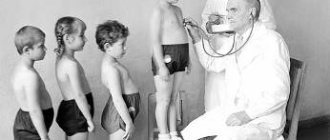How Catherine II was the first
It is generally accepted that the first vaccination in Russian history was given on October 23, 1768, and it was given to the most important and powerful patient of the Russian Empire at that time - Catherine II. The vaccination was against smallpox, a terrible disease that has now been defeated thanks to vaccination. But in the 18th century, a smallpox epidemic decimated the populations of both Europe and Russia. In some years, more than a million people died from smallpox. It was very easy to become infected - the disease spared no one, making no distinction between classes. Smallpox did not escape the Russian throne either. In 1730, Tsar Peter II died of smallpox at the age of 14.
The mortality rate from smallpox in those years was about 40 percent - in other words, in the 18th century, a person who became ill had an almost equal chance of surviving or dying. At the same time, doctors already noticed that a person who had had smallpox would never get sick with it again. The discovery of the theory of immunity was about a century away, but doctors in the 18th century began to use this observation. By today's standards, their vaccination method seems extremely unsafe, but then it was quite acceptable, because the mortality rate of people vaccinated with this method was only about two percent, 20 times less than that of unvaccinated people. The method, called variolation, consisted of making an incision on the patient’s arm, into which smallpox material taken from a sick person was placed (the English doctor Edward Jenner developed a safe vaccine based on cowpox only in 1796). If everything went well, the vaccinated person suffered from a mild form of smallpox, after which he could no longer become infected. This method was discovered by the Turks, then English doctors studied it. First they tried variolation on criminals, then on orphans from an orphanage, and then, when all the subjects survived, they vaccinated the royal family.
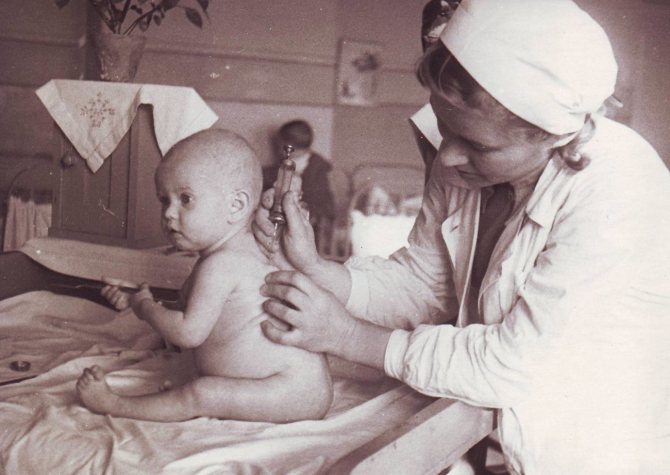
Catherine II was very afraid of smallpox. After Countess Sheremetev died from this disease in 1768, whose fiancé, Count Nikita Panin, was the mentor of her son Tsarevich Pavel (the future Emperor Paul I), Catherine decided to get vaccinated. The doctor Thomas Dimmesdale was discharged from London; he took the “smallpox matter” from six-year-old Sasha Markov. In the event of her death, the empress ordered to keep a team of post horses on standby so that the doctor could urgently leave the country and avoid lynching. Six days after the vaccination, Catherine began to show signs of malaise, and she retired to Tsarskoye Selo. But everything ended well: a week later the empress recovered. Immediately after this, following the example of Catherine, 140 aristocrats signed up to be vaccinated against smallpox - it became fashionable to get vaccinated.
Fatal passion, misalliance and happy marriage: six love stories from Moscow museums
The Empress ordered that a description of her illness be made public, “so that others, using the same means, could conveniently protect themselves from danger.”
The doctor received a baronial title, the title of life physician and a pension of 500 pounds sterling per year, and Alexander Markov received nobility and a new surname, Ospenny. His coat of arms showed a ripe pockmarked hand above the elbow holding a red rose.
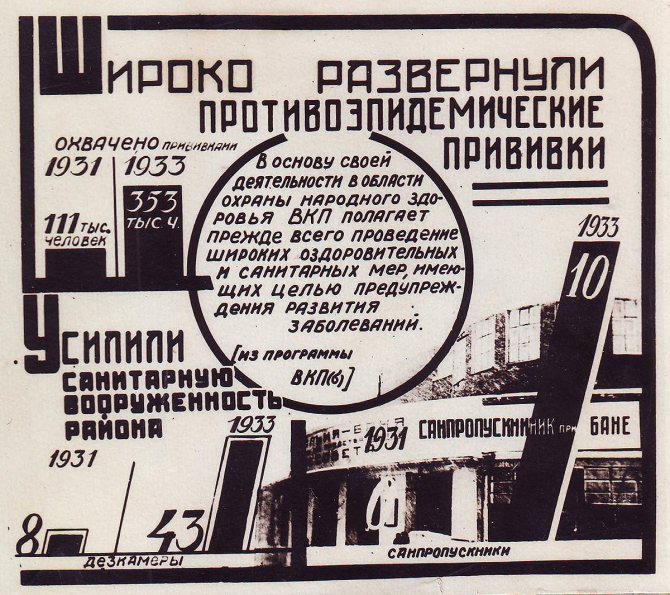
In honor of the first smallpox vaccination, a commemorative medal was stamped with the image of Catherine II and the caption “She set an example.” And on the front side of the medal “For Vaccination of Smallpox,” which in the 19th century was awarded to doctors who vaccinated against smallpox, there was a portrait of Catherine II. In addition, the Italian choreographer Gasparo Angiolini, invited to Russia, staged the ballet “Defeated Prejudice” on the theme of the empress’s vaccination, where allegorical figures of science fought with figures of superstition.
Dimmesdale later returned to Russia to vaccinate the Empress's grandchildren. By this time, the Russian Empire was one of the leaders in Europe in the fight against smallpox. While vaccinations were being done in Russia, King Louis XV died of smallpox in France. “What barbarity,” said Catherine, having learned about this, “after all, science already makes it possible to treat this disease.”
Post-vaccination reactions
The chickenpox vaccine is very easily tolerated by people; reactions to it are very rare. The majority of people who experienced any reactions to the vaccine developed local manifestations. Local reactions include the following symptoms at the injection site: swelling, induration, redness and slight soreness. These symptoms disappear within a few days and develop on the first day after immunization. In addition to local reactions, general symptoms develop in 0.1-5% of cases. Common reactions to the chickenpox vaccine include fever, rash, itchy skin, weakness, fever, and enlarged and painful lymph nodes.
How Sklifosovsky opened a Pasteur station in Moscow
Before the discovery of vaccines by Louis Pasteur, rabies in Russia was fought with conspiracies, burning wounds with a hot iron, and other methods that had little to do with science. For example, in the 19th century, the Government Bulletin published an article “On the treatment of hydrophobia with a Russian bath.”
Pasteur's discovery in 1885 was a real salvation. People bitten by rabid animals flocked to Paris. Among the first to avoid the death of 2,500 people thanks to the vaccine were 16 of the 19 residents of the Smolensk province bitten by a wolf. Everyone could have survived, but the three were unlucky - they were late to receive help: the meeting of the city council in Bely, which was supposed to allocate them 16 thousand rubles for the trip, took place only on the third day after the disaster, the victims waited for another two days for a doctor to accompany them. In total, 44 people who had been bitten by rabid animals came to Pasteur from Russia - peasants from Smolensk, Oryol, Penza, Vladimir, Tver and Kostroma provinces.
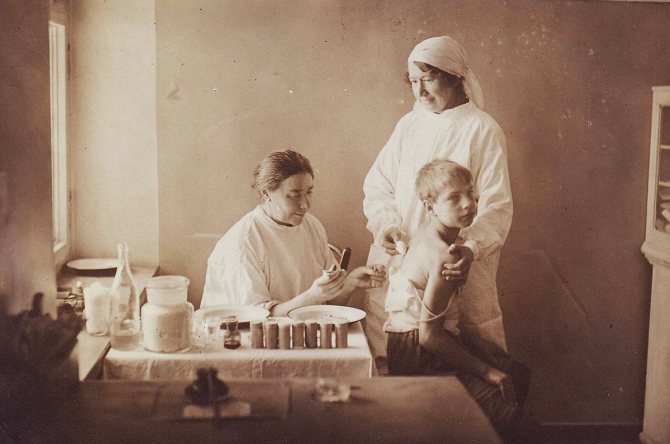
The resolution of Alexander III was preserved in a letter from the Chief Prosecutor of the Holy Synod, Konstantin Pobedonostsev, who asked to allocate funds for these trips to France: “Receive 700 rubles from Taneyev. It is very advisable to send the most dangerous ones to Paris to Pasteur, who is very interested in the bites of a rabid wolf, since he has never had such a patient before.” Subsequently, the emperor donated about 100 thousand francs to the opening of the Pasteur Institute in Paris.
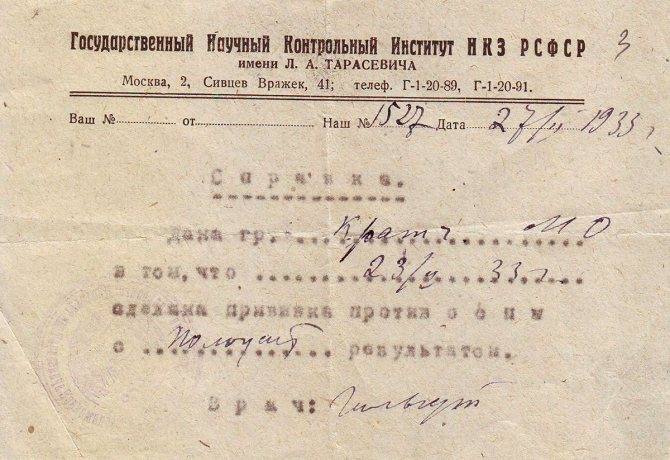
And Pasteur stations soon began to open all over the world, and Russia became one of the leading countries in this regard. The first vaccination station against rabies in the Russian Empire (and the second in the world) appeared in Odessa on June 11, 1886, and a month later the same one was created in Moscow. For its opening, Louis Pasteur sent his autographed portrait. It is still stored at the Moscow Research Institute of Vaccines and Serums named after I.I. Mechnikov, opened at its base. One of the initiators of the creation of the Moscow station was Nikolai Sklifosovsky.
An orphanage, a people's university and a pharmacy: what did Moscow philanthropists of past years do?
By 1912, there were already 28 Pasteur stations in Russia, and by 1938 in the USSR - 80 (not counting several hundred branches). The Moscow station became the leading center for combating rabies in the USSR. Thousands of lives have been saved since then by rabies vaccines.
How Soviet scientists defeated polio
In the middle of the 20th century, the world was overtaken by a new disaster - polio. About 10 percent of those sick died, another 40 percent became disabled. US President Franklin Delano Roosevelt, science fiction writer Arthur C. Clarke, and director Francis Ford Coppola suffered from it.
In the Soviet Union, the first epidemics began in 1949 in the prosperous Baltic states, Kazakhstan, and Siberia. The disease claimed about 12 thousand lives annually.
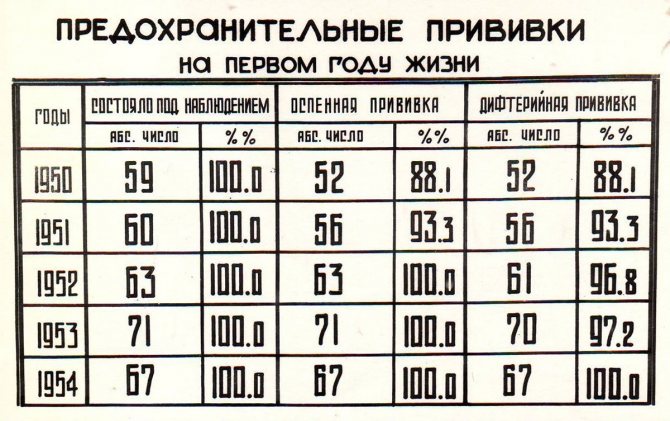
In 1955, the United States began producing the polio vaccine, the Salk vaccine. At the same time, virologist Albert Sabin created another vaccine, cheaper, more effective and safe. But there was no opportunity to test it in America - why, if there is already a good vaccine?
Meanwhile, three Soviet scientists were sent to the United States - Mikhail Chumakov, his wife and colleague Marina Voroshilova and Leningrad virologist Anatoly Smorodintsev. Sabin and Chumakov agreed to continue development in Moscow. Several thousand doses of the vaccine were brought from the United States in an ordinary suitcase. And they got their first vaccinations.
“In 1960, I was nine years old,” said Mikhail Chumakov’s son, Professor, Doctor of Biological Sciences Pyotr Chumakov. — The vaccine trials were carried out primarily on us - Chumakov’s children, Smorodintsev’s granddaughters, relatives, and colleagues. I remember how even earlier I was injected with the Salk vaccine - an intramuscular injection in the forearm. It couldn’t be otherwise - developers always test inventions on themselves and their children. There was no danger in this, the parents were sure. And none of the relatives was against it: everyone understood the danger of polio and believed that the vaccine would protect children from the disease.”
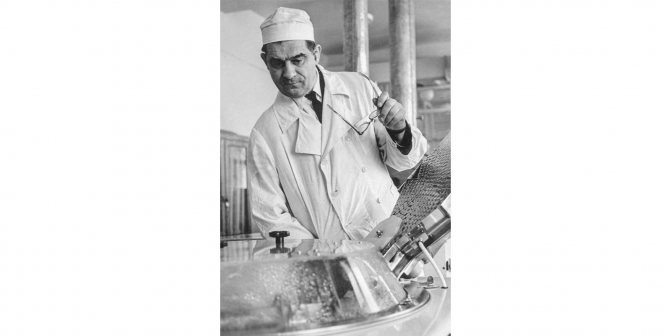
But there were great difficulties with permission from the Ministry of Health - officials doubted: why did the Americans refuse the vaccine, and we should test it? Chumakov managed to break the vicious circle of refusals with the help of a real adventure: using an unattended Kremlin telephone number, he dialed the number of Anastas Mikoyan, who was in charge of healthcare. Mikoyan asked: “Mikhail Petrovich, is this a good vaccine?” - “Good.” - “Vaccinate.” Mikoyan also had grandchildren.
Bypassing the Minister of Health, 300 thousand doses of the vaccine were sent to the Baltic states. Polio receded, and within 1.5 years the epidemic in the country was over. In 1960, 77.5 million people in the USSR were already vaccinated with this vaccine.
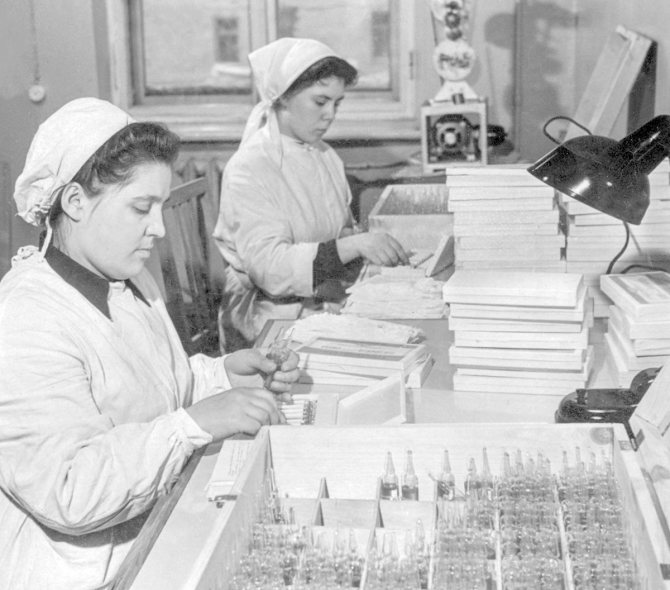
When the Soviet delegation made a report on successful vaccination at a conference in Washington, someone shouted from the audience that no one in the West trusted Soviet information. Then the Soviet delegate said: “I can only assure you of one thing: we love our children no less than you love yours.” Then the audience applauded.
In 1963, Mikhail Chumakov and Anatoly Smorodintsev received the Lenin Prize. The world's leading scientists from the USA, Japan, Europe and China came to the annual symposium at the Institute of Poliomyelitis and Viral Encephalitis of the USSR Academy of Medical Sciences. The vaccine produced by the institute was imported by more than 60 countries.
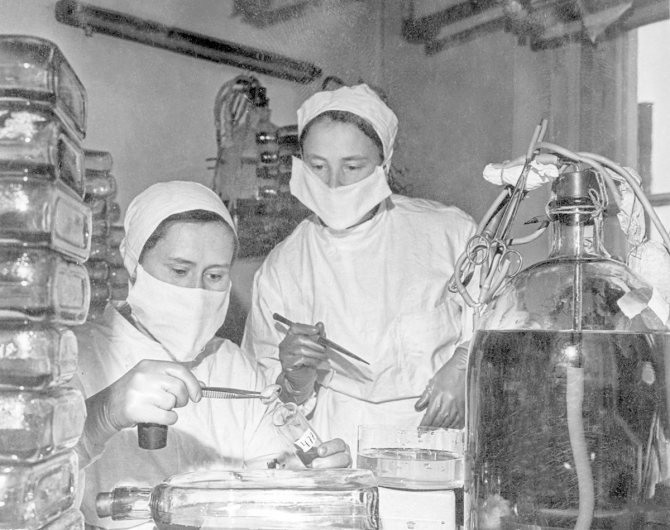
Intracutaneous method of vaccination against smallpox
Vaccination with purified bovine lymph using intradermal injection has been proposed. This method is safer in terms of infection from the outside and does not leave scars, but it is much more complex in technique.
In the USSR, the entire population was covered by vaccination and revaccination. The first decree of the Council of People's Commissars on compulsory vaccination was published on 10/1V 1919. The second decree, supplementing the first, was issued in 1924. In 1939, more expanded requirements in the field of smallpox vaccination were established. The regulations and instructions of the People's Commissariat of Health of the USSR on smallpox vaccination were published in 1940.
According to the current regulations, vaccination is carried out in the first year of life (from 2 months of life), revaccination - at the ages of 4-5 years, 10-11 years and 18-20 years. In case of introduction of infection, it is mandatory to carry out universal vaccination against smallpox in the locality where the infection was introduced.
The scale of smallpox vaccination work in the USSR is evidenced by the colossal number of vaccinations and revaccinations carried out from 1935 to 1945. - 327,000,000.
How Japanese mothers demanded the Soviet vaccine
In Japan, in the 50s and 60s of the 20th century, a real tragedy unfolded: thousands of cases of polio were recorded in a small country. A live vaccine produced in the USSR could stop the epidemic. But for the Japanese government, registering and issuing permission to import medicine from the Soviet Union was an unthinkable precedent.
Then the mothers of children with polio took to the streets, demanding permission to import the Soviet vaccine. They achieved their goal: urgent import of the vaccine was organized. 20 million Japanese children were saved from the threat of the disease.
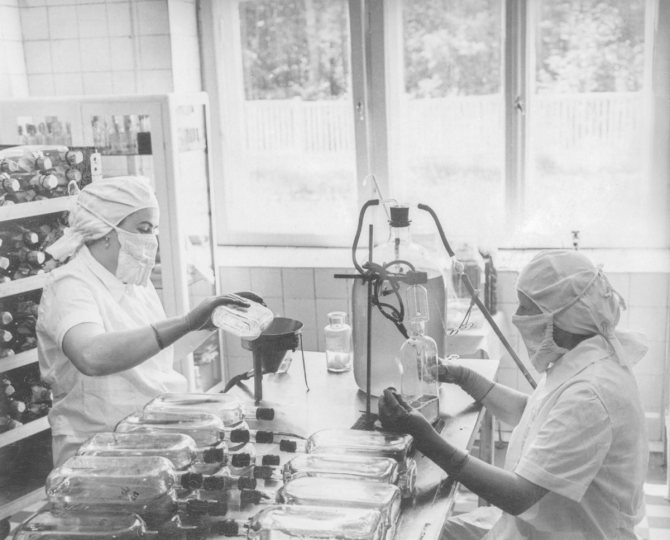
Based on this story, in 1988, director Alexander Mitta shot the Soviet-Japanese two-part film “Step” with Leonid Filatov and Komaki Kurihara in the lead roles. Oleg Tabakov, Elena Yakovleva, Vladimir Ilyin and Garik Sukachev played with them. His song “My Little Babe” is heard in the film.
According to the plot, it is 1959, there is an epidemic in Japan. The country's Salk vaccine is only 60 percent effective and is in short supply. Japanese woman Keiko, who lost her eldest son, wants to protect her younger son from polio at all costs and decides to go to the USSR to bring a new Soviet vaccine to Japan.
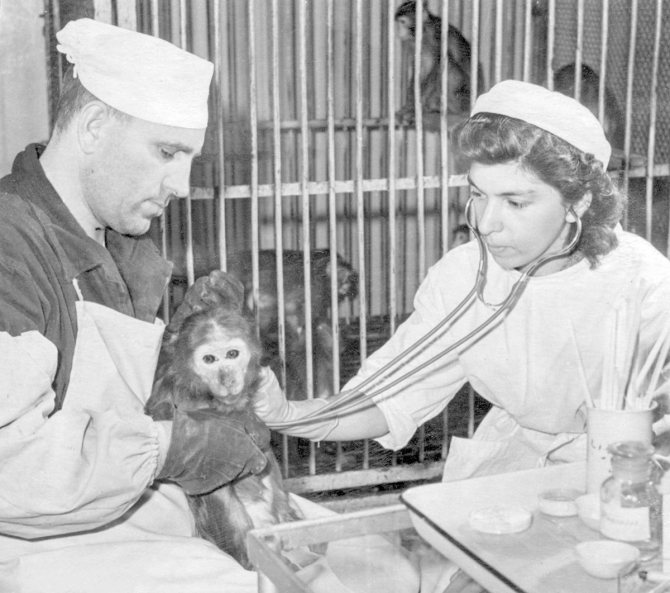
In the Soviet Union, Keino receives the vaccine for himself and buys another thousand doses for his compatriots, but it is confiscated at customs: according to Japanese law, any medicine imported into the country must undergo a lengthy inspection that takes two years. Japanese mothers stage protests and demand the import of the Soviet vaccine immediately, but this is prevented by the bureaucrats of both countries. Through the efforts of Keiko and other mothers on the one hand and the Soviet doctor Gusev on the other, it is possible to send the vaccine to Japan.
How candy became medicine
In the 1950s–1960s, anti-polio candies were produced at the Marat confectionery factory.
Mikhail Chumakov was looking for the best way to deliver the vaccine to the intestines - so that the beneficial virus would not be lost in the mouth, where it does not multiply, but would rather reach its destination. As a result, he came up with the idea of making the vaccine in the form of pills. And already in March 1959, the Marat factory (in 1971 it was merged with the Rot Front factory, and in 2002 they became part of the United Confectioners) commissioned the Chumakov Institute to produce anti-poliodrage - capsules made of sugar and starch syrup with wax. coating. The candies weighed one gram and were stored in the refrigerator.
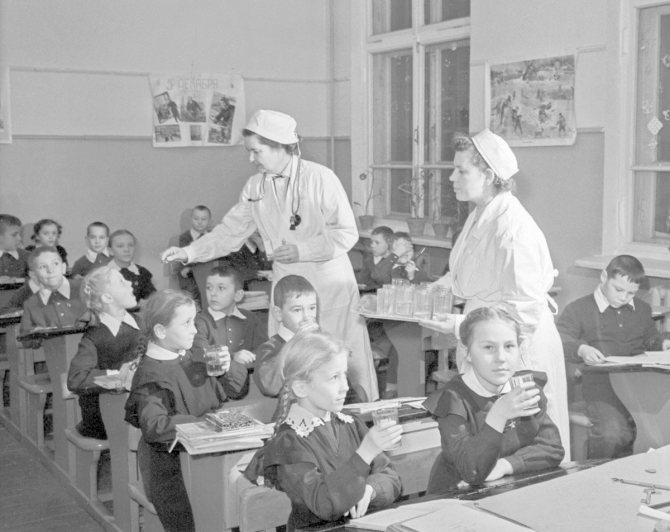
Children loved them, and qualified medical personnel were no longer even required to administer the vaccine.
Such vaccine candies were produced at Marat's factory until the end of the 1960s. By October 20, 1968—Food Industry Workers' Day—the Ogonyok magazine published an article entitled “Candy Against Disease.” It published a photo of the workers and said that the most interesting product of the factory is candy-medicines, and the factory is a monopolist in the production of anti-polio pills.
How to escape a virus from the past in 19 days
Sometimes terrible viruses, left seemingly in the distant past, remind us of themselves.
The famous Soviet poster artist Alexey Kokorekin traveled around India in 1959. After returning, he felt unwell and was hospitalized at the Botkin Hospital, where he died.
The diagnosis was not made immediately: in India, the artist contracted smallpox, which was eradicated in the USSR in 1936. The intelligence services identified all the potential contacts of the deceased - there were about nine thousand of them. A thousand people with the greatest risk of infection and the Botkin hospital were isolated, and almost the entire population of Moscow (at that time more than six million people) was urgently vaccinated.
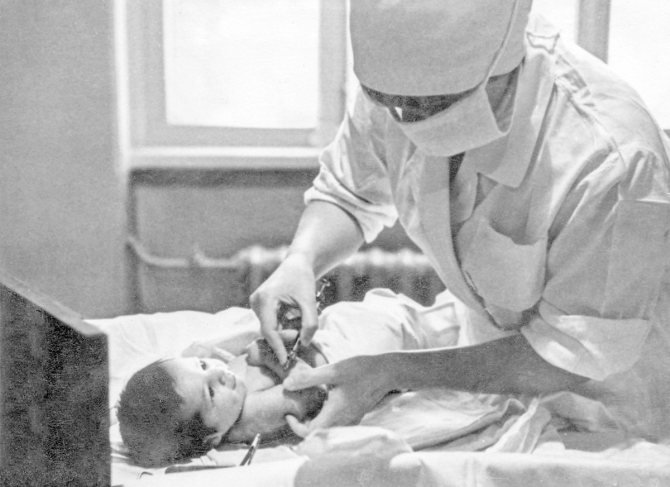
New entrances, elevators, lifts: how the first building of the Botkin Hospital will change after renovation. Transplant operations will be carried out on a permanent basis at the Botkin Hospital
The outbreak was localized in 19 days, 46 people fell ill, and three died from smallpox - a receptionist at a thrift store (where Kokorekin’s relatives handed over the things he brought from India), a nurse in the infectious diseases building, and an infectious disease doctor.
The smallpox virus is still kept in few scientific laboratories.
“In the 1990s, WHO demanded that all strains of smallpox be destroyed,” recalls Pyotr Chumakov. “My father was categorically against this. “Okay, we will destroy all the strains in the laboratories, but God forbid there will be a new outbreak, if the virus from the burial grounds gets into the soil or water, then we will not be able to do anything.”
Smallpox has been considered completely eradicated since 1980 - there have been no cases of this disease since then.
Pyotr Chumakov has his own memories of dangerous viruses that can be found even at a scientific symposium.
“Not far from Pereslavl-Zalessky in the 1970s there was a leper colony,” he said. — An Indian scientist lived there; he came to the USSR for a scientific symposium. And our doctors noticed symptoms of leprosy on his face - and they are difficult to miss, for example, lost eyebrows. At that time there was a law on the forced isolation of leprosy patients. And the professor was taken to the leper colony, where he lived.”
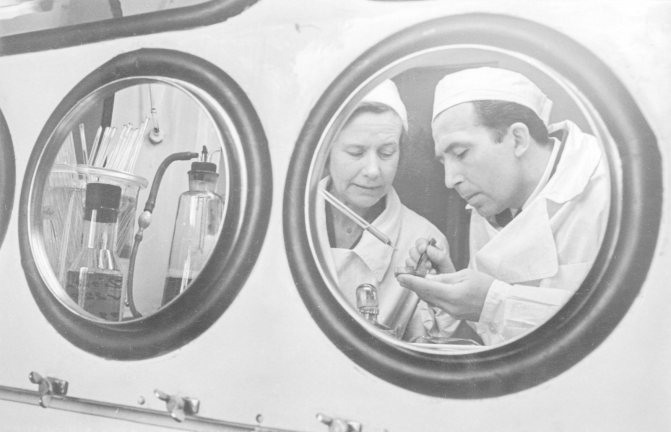
Indications and contraindications for smallpox vaccination
Primary vaccination against smallpox is carried out during the 1st year of a child’s life.
The best age to vaccinate children with smallpox is from 3 to 10 months from birth. If there are appropriate epidemiological indications, children are vaccinated at any age, starting from the first day of life. Those who have had smallpox are subject to smallpox vaccination on a general basis 5 years after the disease. Revaccination can be done at any age within the time limits established by law. Successful vaccination is judged by the presence of scars on the skin. Contraindications, as a rule, are only grounds for postponing vaccination for a certain period. Such temporary relative contraindications include all kinds of acute diseases, pernicious anemia, hemophilia (smallpox vaccination is done intracutaneously). All skin diseases with a violation of its integrity (eczema, etc.) should also serve as a reason for postponing vaccination; Vaccinations should not be performed in case of uncompensated heart disease, bronchial asthma, nephritis; Children who have had chorea minor are vaccinated 1-2 years after recovery. Open tuberculosis of the lungs, bones and joints is also a contraindication, as well as spasmophilia and epilepsy (vaccination is carried out no earlier than a year after the symptoms disappear).
When vaccinations against scarlet fever, diphtheria and smallpox are carried out simultaneously, the following periods between vaccinations are established.
- With primary vaccination against smallpox, in case of a positive result of smallpox vaccination, vaccinations against scarlet fever and diphtheria can be started after the scabs fall off.
- With revaccination with a positive result (presence of pustules), the period between smallpox vaccination and vaccinations against scarlet fever and diphtheria is the same as with successful vaccination.
- If vaccinations against scarlet fever or diphtheria have already been started, the primary vaccination should be carried out 2 weeks after the last injection.
- Revaccination against smallpox can be carried out simultaneously with vaccinations against scarlet fever or diphtheria (the injection is made in the other arm or under the shoulder blade).
- When vaccinations against scarlet fever or diphtheria are carried out simultaneously and revaccination against smallpox gives a positive result (presence of pustules), subsequent vaccinations against scarlet fever and diphtheria should be stopped until the scabs fall off.
- Revaccination can be carried out simultaneously with vaccination against typhoid fever.
“Everyone, from the elephant to the fly, needs to be vaccinated against jaundice.”
In the USSR, the vaccination campaign was going on everywhere. It also appeared on television - the 1966 cartoon “About the Hippopotamus Who Was Afraid of Vaccines” is widely known. According to the plot, the cowardly hippopotamus was the only one of the fairy-tale animals that escaped from the clinic. At first gray and cheerful, then white from fear of vaccination, the hippo turns yellow because he gets jaundice, and at the end of the film he blushes from shame for being afraid of the injection. The funny cartoon was watched by millions of Soviet children. What vaccinations did they have?

All those born after the war were vaccinated against tuberculosis, diphtheria and polio. Over time, vaccinations against whooping cough, tetanus, measles and mumps were added. Children born before 1979 were vaccinated against smallpox, but in 1980 smallpox was considered eradicated worldwide and the vaccine was discontinued.
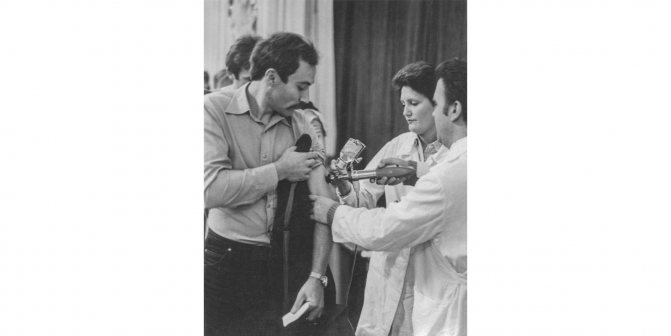
In the late 1990s, a two-shot rubella vaccine, a booster against measles, and a hepatitis B vaccine were introduced into the national calendar, and in the 2010s, the Haemophilus influenzae vaccine for children at risk and the pneumococcal vaccine were added.

Mass flu vaccinations began in Russia due to the threat of a pandemic in 2009–2010. Vaccination is now included in the national calendar and is provided free of charge in government medical organizations. Last year, according to Rospotrebnadzor, 49 percent of the country’s population—70.8 million people—was vaccinated. Doctors stated that the incidence of influenza has decreased by almost 200 times since 1997 - from 5173.8 cases per 100 thousand people to 26.5.
Chickenpox vaccination schedule
Vaccination can be planned or emergency. The chickenpox vaccine is injected into the upper third of the shoulder, subcutaneously.
Children between the ages of two and thirteen are scheduled to be vaccinated once. For adolescents and adults, the vaccine is administered twice, with an interval of one and a half to two months.
After contact with someone infected with chickenpox, emergency vaccination is recommended. It is carried out once in a standard dose within four days after contact (the best option is within the first two days).
Women who are planning to have a child are recommended to get vaccinated several months before the expected pregnancy.










